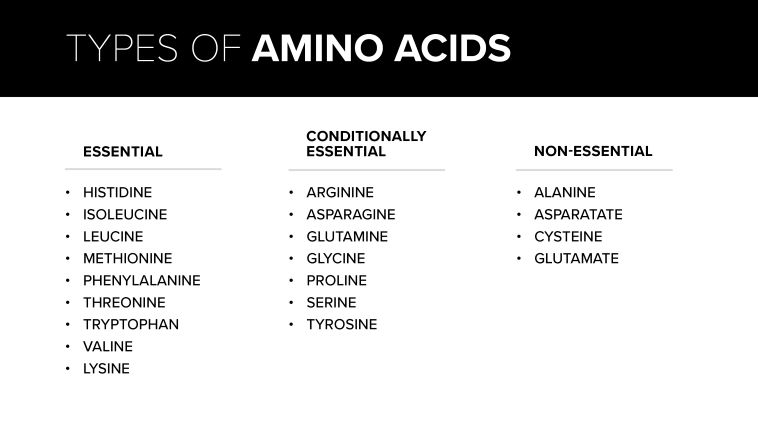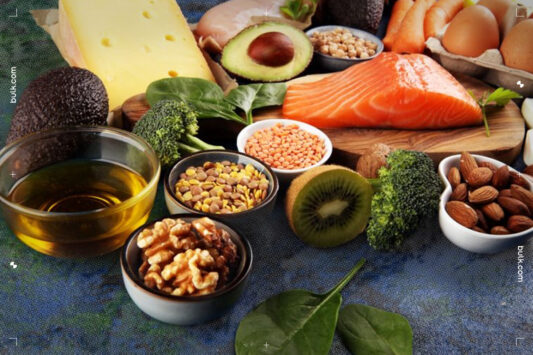What are Amino Acids?
Nutrition can be confusing but, it doesn’t have to be complicated. We’ve put together this beginner’s guide to amino acids to take you through everything you need to know so, let’s get started.
Amino acids AKA muscle’s building blocks are compounds that combine to make proteins. If you’re serious about your gym sessions or sports performance, you’ve probably heard of them. Chances are that BCAAs (branched-chain amino acids) also have popped up on your radar. They’re a trio of essential amino acids (leucine, isoleucine and valine) responsible for muscle growth and performance enhancement.
Roughly 20% of our body is made up of protein – a key player in all biological processes. Linking together in chains called peptides or polypeptides, amino acids act as the building blocks that power protein creation. That’s not all they do, though. They support metabolic function, protect the heart and can be a source of energy if necessary.
What are the Benefits?
Considering that proteins are made of amino acids, the two can be easily confused. However, there are some differences. When we consume protein through our diet, it gets broken down by our digestive system into amino acids. Therefore, high-quality protein that’s packed with all the essential amino acids can have a positive impact on your performance and help you get the results you’re after.
Integrating amino acids separately (meaning they don’t come from food) also has its benefits. They’re faster to absorb as they don’t need our digestive system as much as a stake would and they reach your muscles more quickly. Even though they’re less complete because they’re not coming from food, they also have a different impact on our metabolism and they don’t affect your calorie intake. That’s especially helpful if you’re trying to cut down on that. Proteins, on the other hand, account for 4kcal per gram but, they’re way more than the sum of the amino acids they’re made of and contain elements that amino acids can’t provide on their own.
Timing is also something any beginner should keep in mind. Research shows that there’s a 30-45 minutes window during which muscles are particularly ready to absorb nutrients. Proteins coming from food are too complex and need longer than that to be broken down. That’s why separately integrating can be pretty useful and effective. That’s it for the basics, let’s get familiar with the main types of amino acids.
Types of Amino Acids
- Essential amino acids
- Nonessential amino acids
- Conditional amino acids
Next up in our guide to amino acids, we have a bit of science. Our body can’t produce essential amino acids from scratch and need to be introduced via food or supplements. However, the human body can produce another 11 amino acids that we usually call nonessential. These are the ones you’ll need in case of intense physical activity, stress or illness. That’s why conditional amino acids also fall under the nonessential category since they only become necessary under certain conditions.

What are amino acids used for then? For example, Glutamine, Tyrosine and Arginine are the typical amino acids that committed gym-goers and athletes would integrate to sustain their regime. Amino acids aren’t just about increasing your performance, though. They’re essential to maintaining good health.
What foods Contain Amino Acids?
Most of the amino acids we need come from our diet but, depending on your lifestyle and the food available to you, it can sometimes be a challenge to consume the right quantity and variety required. Here are a few examples of foods that are high in amino acids to get you started.
- Red meat – the leaner, the better
- Poultry and fish – chicken and turkey breast, tuna and salmon are an easy alternative to red meat
- Dairy – whey protein, liquid egg whites, cheese and yoghurt are classic go-to’s
- Vegan sources of amino acids
– Quinoa, buckwheat and soy products – think tofu, miso, tempeh etc.
– Nuts, seeds and beans
Amino Acids from Bulk™
Now that you’re through our guide to amino acids, you can call yourself a pro. Looking for inspiration? Take a look at the top amino acid supplements on-site:
Planning on using these in your pre-workout shake? Let us know how it goes on social media tagging our official account.
Related articles
Looking to learn more? We believe that every person, with support, has the right to transform their lives through fitness. That’s why we’ve put together hundreds of articles with expert advice, all to help you on your fitness journey.
Amino acids: do you need them? BCAAs vs Amino Acids
Beginners guide to HMB What are BCAAs?
BCAA and muscle mass BCAA : The Building Blocks of Muscle
Pheylalanine side effects Amino Acids and BCAAs
What is L-Carnitine? Guide to flavoured leucine, creatine and glutamine
















